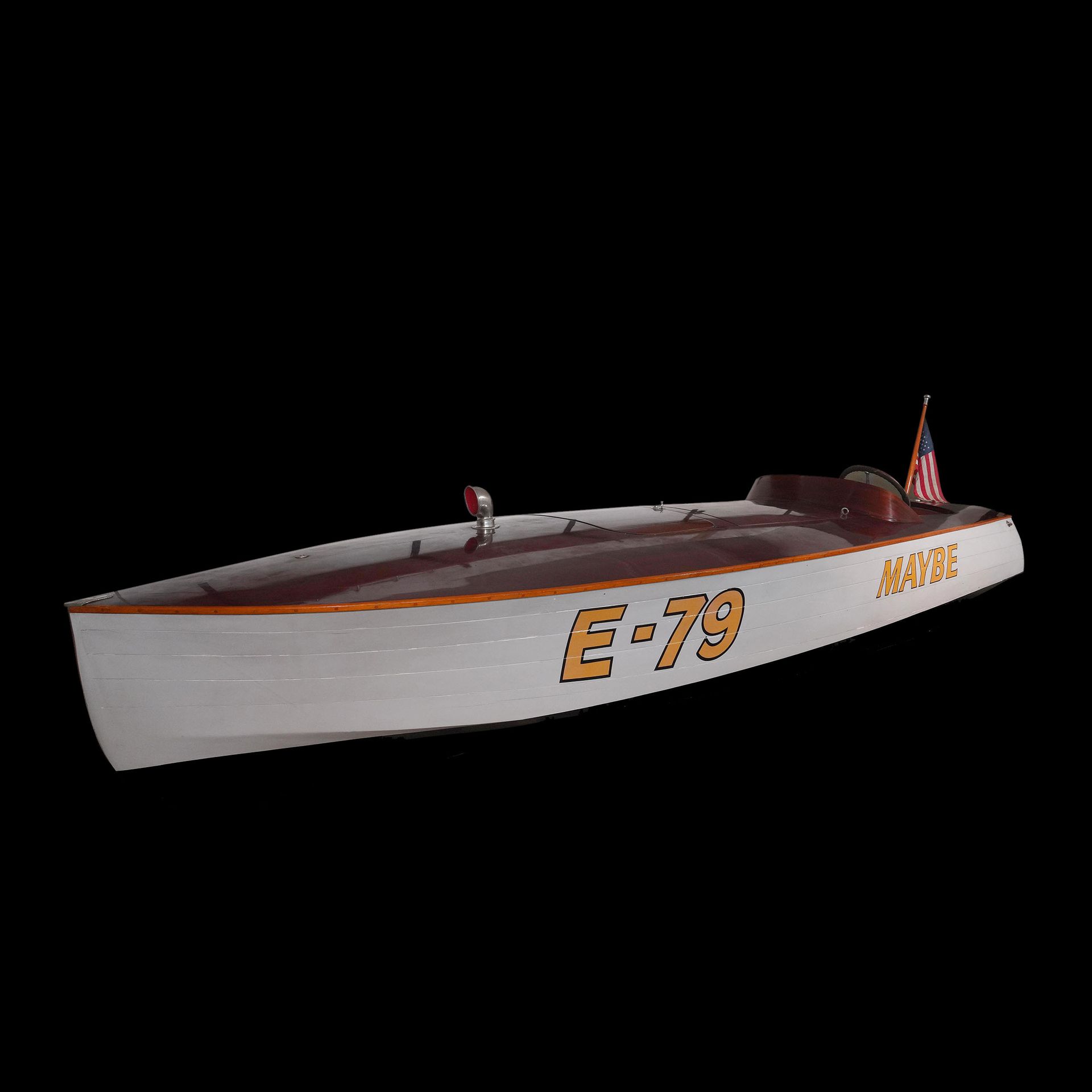Description
1936 JOHN HACKER by LYMAN SMITH RACING RUNABOUT Category : "E Length : 5,60 m Width : 1,74 m Weight: approx. 998 kg Number of seats: 2 Engine : Gray Marine Type : 6 cylinders in line Model : Fireball Displacement : 4,0 l. Power : 150 hp. John Hacker (1877-1961) was one of the most renowned American architects of the 1920s to 1950s. He was responsible for a number of exceptional units such as Pardon Me, Thunderbolt and a series of racing canoes with an impressive track record. In 1924 alone, Hacker designed the first three boats in the "Gold Cup", the most important competition of the year in the United States, including the streamlined and irresistible Baby Bootlegger with a Hispano-Suiza V8 aircraft engine. Within an eclectic and always high-level production, John Hacker also took an interest in more affordable categories, particularly appreciated by gentlemen drivers from the second half of the 1930s until the 1950s. Racing Runabouts, equipped with production engines, were hotly contested races. The 225 CI class was the most prominent in the Northeast and especially in New York State. The Hacker May Be was built in 1936 by Lyman Smith's home yard on the shores of Keuka Lake, New York, and raced in regional championships until the war. After a long period of storage, May Be was moved to the West Coast and restored in 1991 by Tom Frauenheim of Bellevue, Washington. Lyman Smith produced custom boats that were light and very strong, so the restorer was able to retain the original planking and ribs after more than fifty years. The bottom, initially in single planking, was replaced by a double ply, using some of the original wood, then treated with epoxy resin for better stability over time. The deck, also replaced, is now in mahogany plywood. On the mechanical side, the old 6-cylinder Gray Marine Fireball was equipped with a V-drive transmission, which was heavy and penalized in power. As the 1936 engine had to be replaced, it was replaced by a Gray Fireball of 150 hp, identical to the old one, but with a direct transmission to the propeller shaft, which greatly improves the boat's performance. It should be noted that the Gray Marine brand still exists for classic motorboat enthusiasts, taken over by the Van Ness Engineering firm in New Jersey. It still ensures the follow-up of the productions of this house with the long and rich technical and sporting history. The current owner of May Be imported it from the United States in 1993, freshly restored and then raced it at various classic events. The boat has always been well preserved under cover.
2
1936 JOHN HACKER by LYMAN SMITH RACING RUNABOUT Category : "E Length : 5,60 m Width : 1,74 m Weight: approx. 998 kg Number of seats: 2 Engine : Gray Marine Type : 6 cylinders in line Model : Fireball Displacement : 4,0 l. Power : 150 hp. John Hacker (1877-1961) was one of the most renowned American architects of the 1920s to 1950s. He was responsible for a number of exceptional units such as Pardon Me, Thunderbolt and a series of racing canoes with an impressive track record. In 1924 alone, Hacker designed the first three boats in the "Gold Cup", the most important competition of the year in the United States, including the streamlined and irresistible Baby Bootlegger with a Hispano-Suiza V8 aircraft engine. Within an eclectic and always high-level production, John Hacker also took an interest in more affordable categories, particularly appreciated by gentlemen drivers from the second half of the 1930s until the 1950s. Racing Runabouts, equipped with production engines, were hotly contested races. The 225 CI class was the most prominent in the Northeast and especially in New York State. The Hacker May Be was built in 1936 by Lyman Smith's home yard on the shores of Keuka Lake, New York, and raced in regional championships until the war. After a long period of storage, May Be was moved to the West Coast and restored in 1991 by Tom Frauenheim of Bellevue, Washington. Lyman Smith produced custom boats that were light and very strong, so the restorer was able to retain the original planking and ribs after more than fifty years. The bottom, initially in single planking, was replaced by a double ply, using some of the original wood, then treated with epoxy resin for better stability over time. The deck, also replaced, is now in mahogany plywood. On the mechanical side, the old 6-cylinder Gray Marine Fireball was equipped with a V-drive transmission, which was heavy and penalized in power. As the 1936 engine had to be replaced, it was replaced by a Gray Fireball of 150 hp, identical to the old one, but with a direct transmission to the propeller shaft, which greatly improves the boat's performance. It should be noted that the Gray Marine brand still exists for classic motorboat enthusiasts, taken over by the Van Ness Engineering firm in New Jersey. It still ensures the follow-up of the productions of this house with the long and rich technical and sporting history. The current owner of May Be imported it from the United States in 1993, freshly restored and then raced it at various classic events. The boat has always been well preserved under cover.
